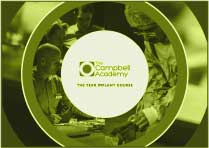.png?width=1627&height=517&name=Full%20TCA%20Logo%20(Purple).png)
So here I go again on this subject, which I had thought by now, I might have had to change my tune on.
In case you missed it in the blog, I am not long back from China and if you want to read about it click here.
I was invited there to discuss the subject of ‘stability in anterior implant placement’ which sounds boring but is perhaps one of the most contentious issues in implant dentistry at the moment. So, for the record and as simply as I can below, here is why we don’t (practically ever) provide anterior immediate implant placement.
I have been on this journey for 15 years and have watched carefully, where ever I can, where new research occurs or new thinking arises in the possibility of placing implants more quickly at the front of the mouth, yet still achieving results which last a long time and look good.
Nothing I have seen has changed my mind – at least not yet.
Please don’t mistake this for the ramblings of someone who is locked in his ways, having invested so much of his time and life in type 2 implant placements with contour GBR (whatever that might mean) who refuses to change.
Given the right technique and the right research and the right proof, I’d switch tomorrow.
But I can’t find it.
As early as 2007 there were significant publications, not least by Stephen Chen who is now President of the world wide ITI, ‘confessing’ to his poor results in immediate implant placement, even with the technique of placing DBBM (Bio-Oss) up the buccal wall in the placement to try and maintain the loss of that wall itself. The research flowed in that direction in 2007, 2009 with systematic reviews in 2009 and then more in 2017. Throughout this period, we continued with our type 2 implant placement, watching the Danny Buser et al results of his five and then ten-year contour stability prospective study.
We searched the literature again and even asked Beatriz Sanchez to focus her Masters dissertation on this subject and on a meta-analysis and systematic review of the comparison of immediate and delayed implant placement in the anterior maxilla and its stability.
Nothing.
Can’t find it.
The only papers we had were excluding people with thin biotypes and including premolars as part of the study to make the results look better.
Still I watch all over the place as people say “it’s different now…put the implant in like this” or “use this implant” or “use this material up the buccal wall” or “put a crown on top and it’ll all be good” and they’ve been doing that for years and are still not showing results at five years that look good.
In 2007 Stephen Chen said it was 30 – 40% of cases which showed significant recession at three years if done immediately.
That’s if you include think tissue biotypes and do that protocol for the teeth at the upper front part of the mouth.
This year Danny Buser has pulled back from his ‘no immediate implants’ stance and issued guidance on when immediates should be done, but it’s so rare that people fall into this category that it’s hardly worth talking about, except for the guys at the very far end of the competency curve.
It really turns out that if you want to do an immediate implant placement at the front of the mouth, and still be looking at a good result five – ten years later (guaranteed above 90%) you need to send it to a Specialist who does it all of the time.
Perhaps this blog will go around and people will send me stuff and say “you’re missing the point, read this paper or that paper” and perhaps I’ll see some material that I haven’t seen before.
But I have searched this and I have made this a study and a huge part of my practising career and I can’t find anything that changes my mind. I despair when I see people (particularly on Facebook) either consciously or unconsciously encouraging others to do this.
We had a look at Facebook as part of the end of the Year Two course the other day in the academy with the delegates (and they are a good group) and I was depressed to note that some of them were bamboozled by some of the cases that are being presented.
So, to finish this little rant… to the guys who are doing the immediate stuff… I would ask them to do this on Facebook.
Please just show us 20 consecutive cases that you’ve done from five years ago. Full exposure, lip out of the way and, if you have a CBCT scanner and the dose is low enough, then scan them too.
Show me that and show me that it’s good and it’ll encourage me to change or even to test it but nobody is doing this. So, in the face of the Andre Schroeder rule to live by which I have written many times and will write many times more:
If it’s not clinically proven to be better than the technique I am already using or clinically proven to be the same and cheaper then I am not changing.
Blog Post Number: 1810





Leave a comment